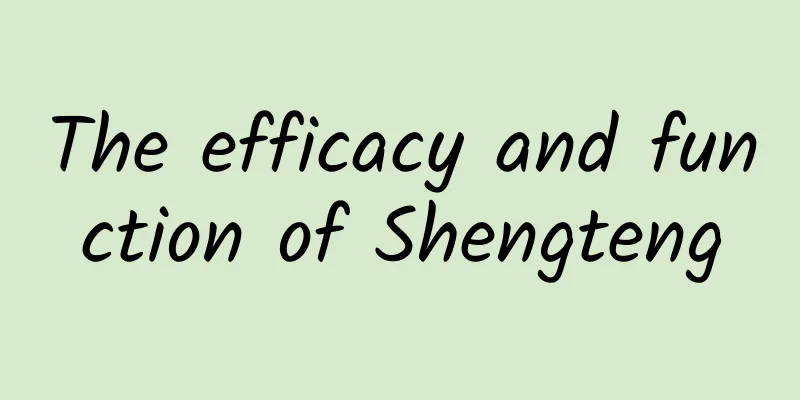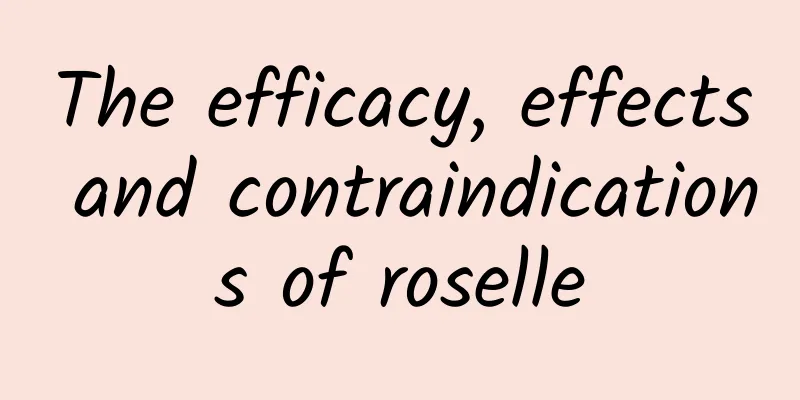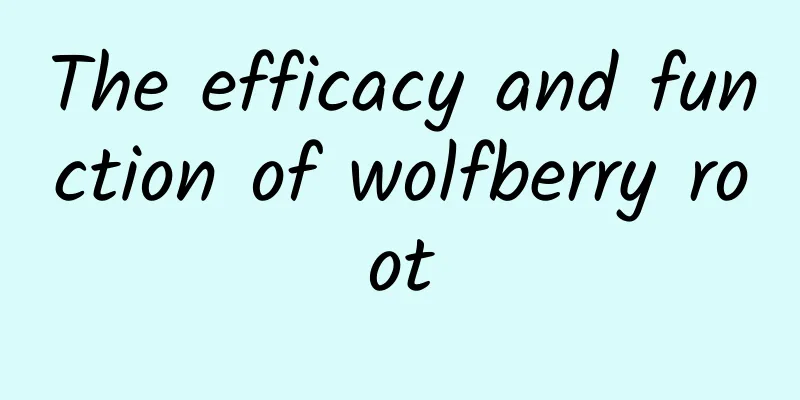The efficacy and function of Shengteng

|
Shengteng is a very common Chinese medicine and is also a frequently used medicine. It has unique effects and functions in treating many diseases. Here we will tell you in detail about the effects of some traditional Chinese medicine Shengteng. [Other names] Red vine, red vine [Source] Medicinal material source: the stem of the palm plant yellow rattan. [Original form] Yellow rattan, a large vine with thorns. The stem is erect at first, then becomes climbing. The leaves are pinnately divided, 2-3m long, with the top of the rachis extending into a slender whip with claw-like spines; the lobes are nearly opposite, 50-75 pairs, linear-lanceolate, 25-45cm long, 1-2cm wide, gradually pointed at the apex, and the back of the rachis has thorns of varying sizes that are curved or straight; the leaf sheath has no slender whips but has flat spines. Before flowering, the spadix is covered by a spathe, which is spindle-shaped, 25-30 cm long, with a red tip that gradually tapers to a tail shape. The outside is densely covered with brown, flat straight thorns, and the spathe inside has few or no thorns. The spathe falls off after flowering and fruiting. The spikelets on the male inflorescence are densely packed, about 3 cm long, and the flowers are densely packed. The male flowers are oblong-ovate and 5 mm long. The calyx is cup-shaped with 3 shallow teeth. The corolla is 3-lobed and about 2 times longer than the calyx. There are 6 stamens, about 3.5 mm long, and the involucre is shallowly cup-shaped. Female flowers: calyx short tubular, 3-toothed at apex; petals lanceolate, about twice as long as calyx; ovary ovate, with 3 stigmas. The fruit is spherical, 1.8-2cm in diameter, with 18-20 vertical rows of scales, 10-20 scales in each row, shiny yellow, and grooved. Seeds reniform. The flowering period is May, and the fruiting period is June-October. 【Habitat distribution】Ecological environment: Commonly found in forests at medium or low altitudes. 【Nature and flavor】 Bitter; neutral 【Functions and indications】Anthelmintic; diuretic; wind-dispelling and analgesic. Mainly used for roundworms, pinworms, redworm disease, painful urination, toothache [Usage and Dosage] For oral use: decoct in water, 5-10g; or grind into powder, 1g each time; or crush and hold orally. 【Explanations by various scholars】 1. "Compendium of Materia Medica": "Yellow vine grows in the south of the Lingnan Mountains and looks like Stephania tetrandra. The common people often take this vine, and even if the food is poisonous, it will not cause the disease. Xi Bian, the governor, said: It is very effective." 2. "Records of Medicinal Herbs in the South of the Lingnan Mountains": "Yellow vine grows in the wild and looks like Stephania tetrandra. It tastes sweet and bitter, is neutral in nature, and is non-toxic. It can promote urination. If you have food poisoning, boil it and drink it frequently to relieve it." 【Excerpt】 Chinese Materia Medica I believe that through the detailed introduction of Scutellaria baicalensis in this article, everyone can understand the efficacy and medicinal properties of Scutellaria baicalensis. I hope this helps you all. |
<<: The efficacy and function of snake grass
>>: The efficacy and effects of holy basil
Recommend
When will the Mid-Autumn moon be the fullest this year?
Although there has been a saying since ancient ti...
Sour, sweet, bitter, spicy, and salty? What chemical components bring these flavors to liquor?
Many friends will experience sour, sweet, bitter,...
The efficacy and function of apple peel
The development of Western medicine has brought s...
The efficacy and function of dry paint [picture]
Modern medical research believes that dry lacquer...
The role and efficacy of Magnolia officinalis flower
Flowers in nature are probably a favorite plant f...
The efficacy and function of Baomazi
Do you know Baomazi? It is a common Chinese medic...
The efficacy and function of Aquilegia spurata
Chinese medicinal materials are very common, and ...
The efficacy and function of Yunnan Changshan Flower
In fact, the occurrence of many human diseases is...
The efficacy and function of the root of wild jay
Modern medical research believes that the roots o...
The efficacy and function of Mirabilis jalapa leaves
The traditional Chinese medicine Mirabilis jalapa...
Side effects of creeping vine
Because of its high ornamental value, creeping gr...
The efficacy and function of Xiaoqing
Xiaoqing is a kind of traditional Chinese medicin...
The efficacy and function of turtle shell
Turtle shell is actually also called soft-shelled...
The fighting power of "autumn mosquitoes" is off the charts. Let's have a "mosquito-killing" storm! See the "vicious" flowers
After finally getting through the summer mosquito...
What are the benefits of Chinese herbal facial masks?
Female friends are very concerned about their fac...









